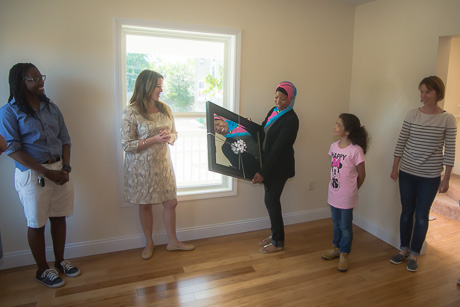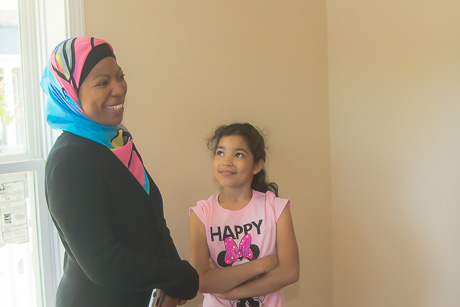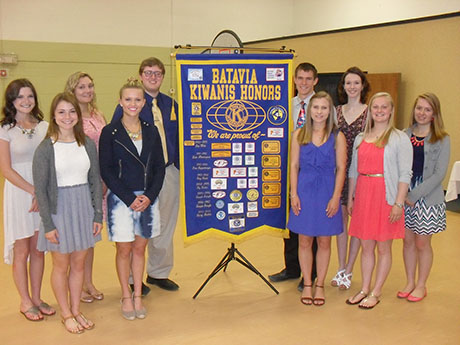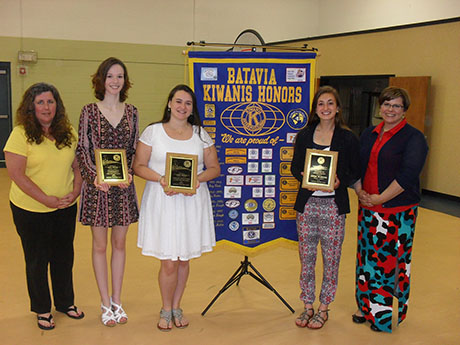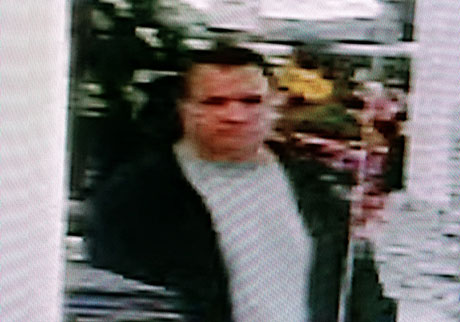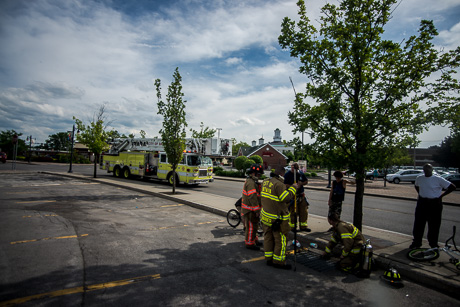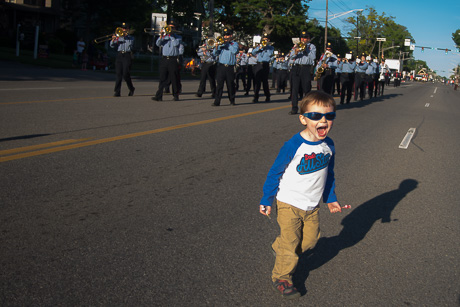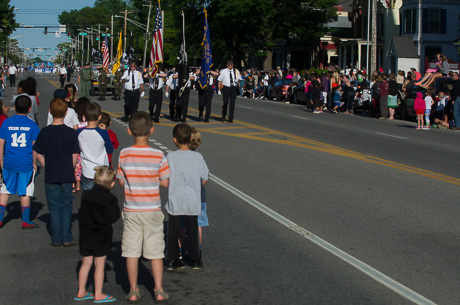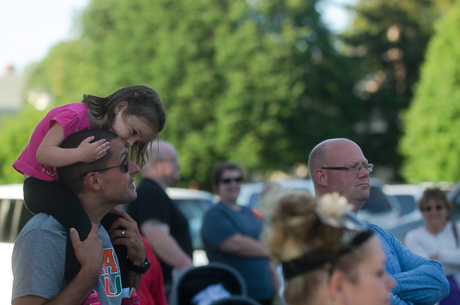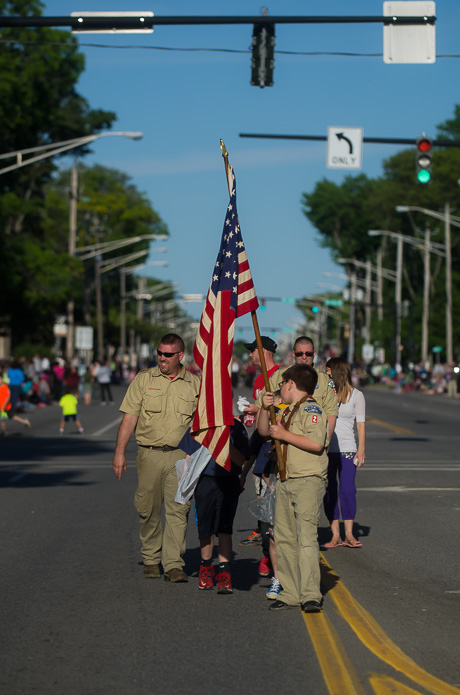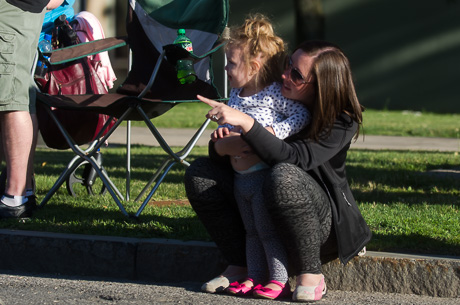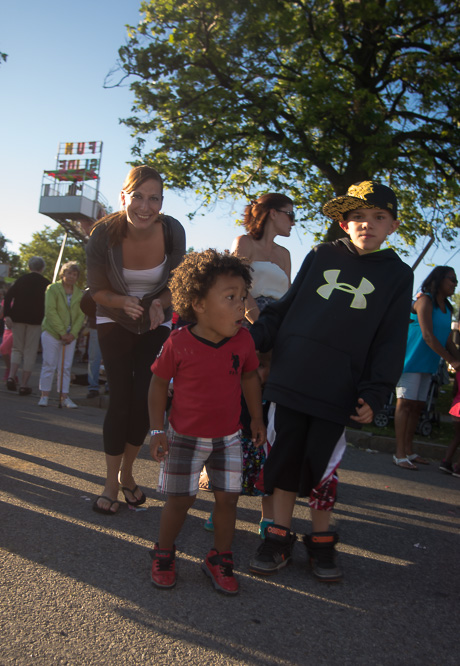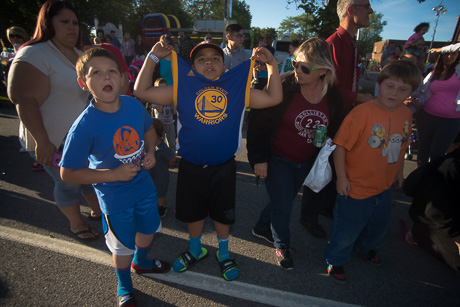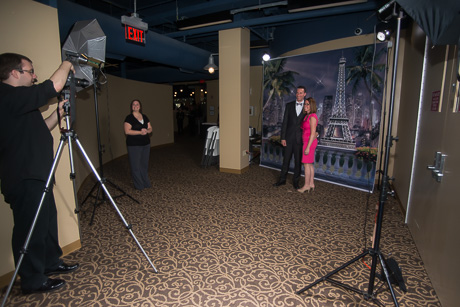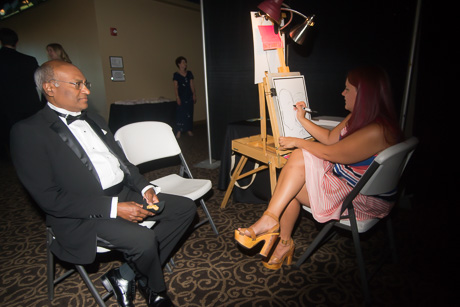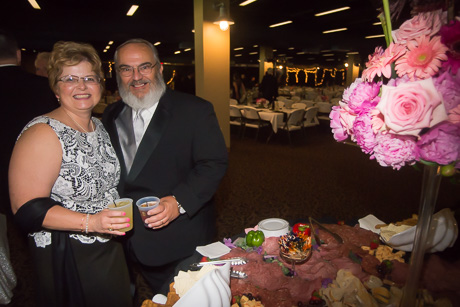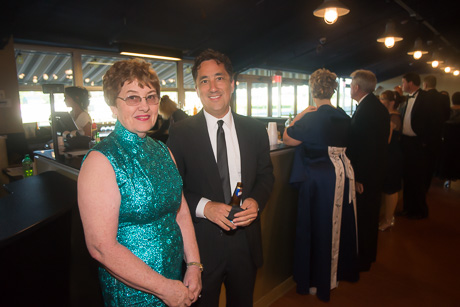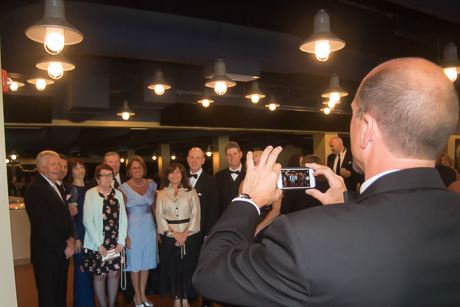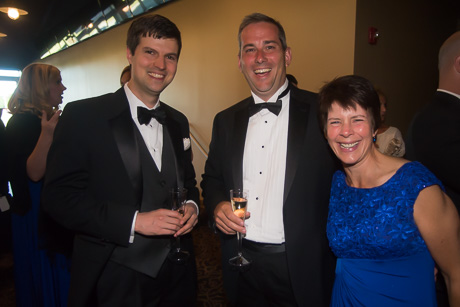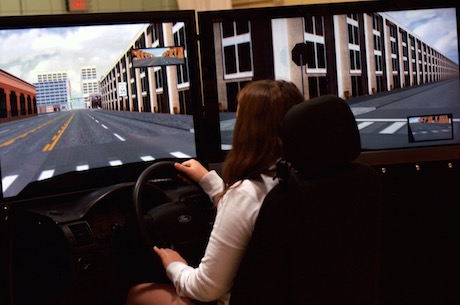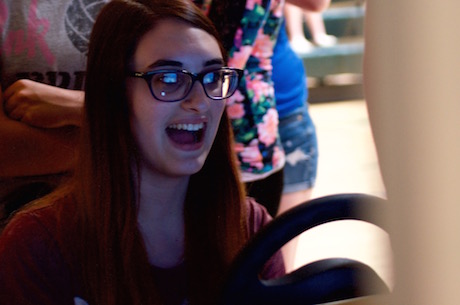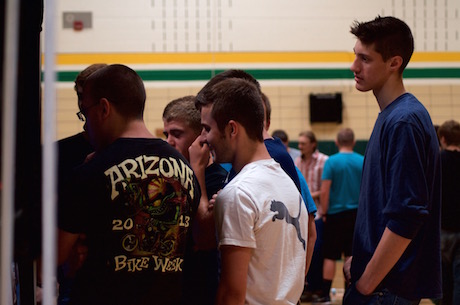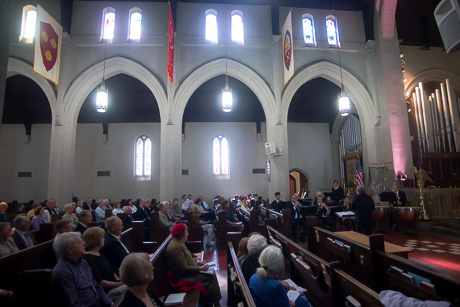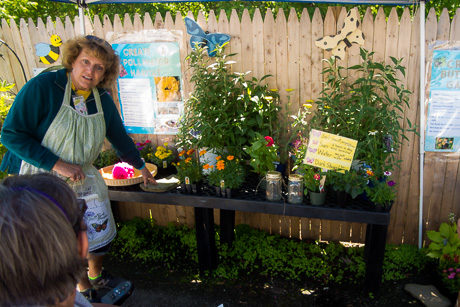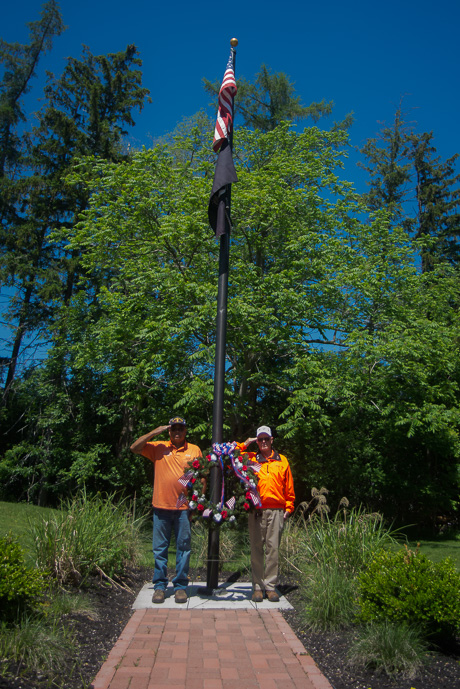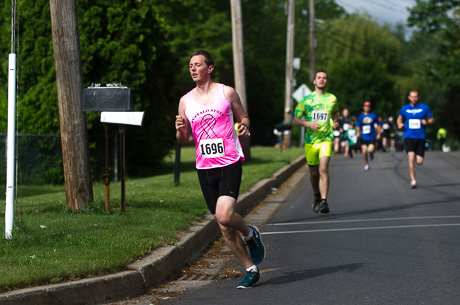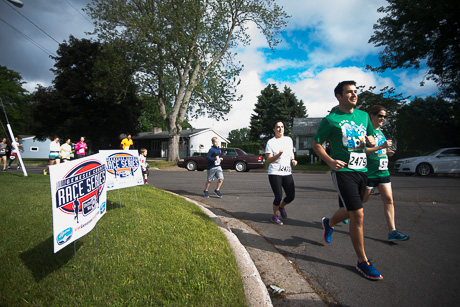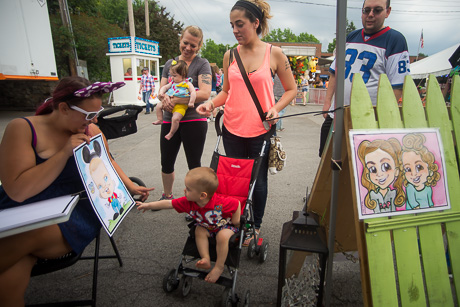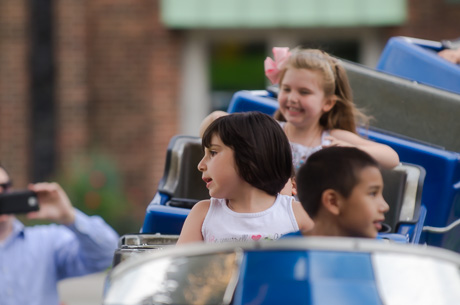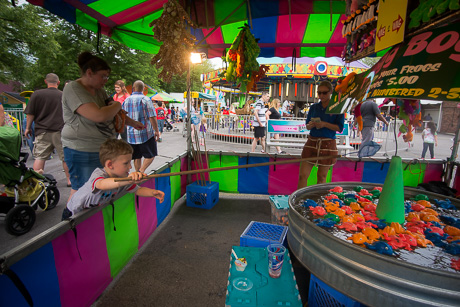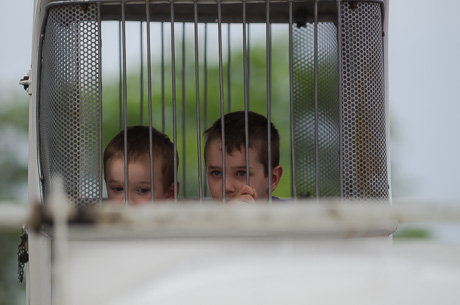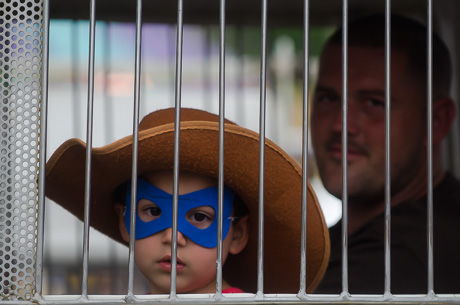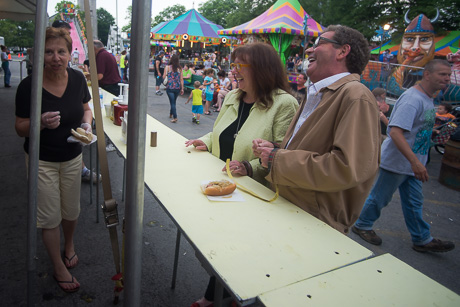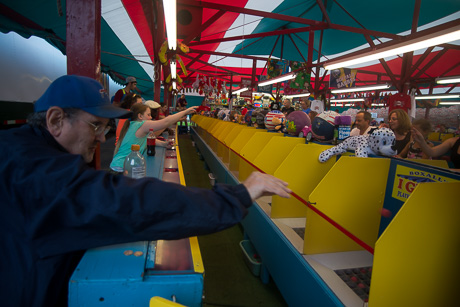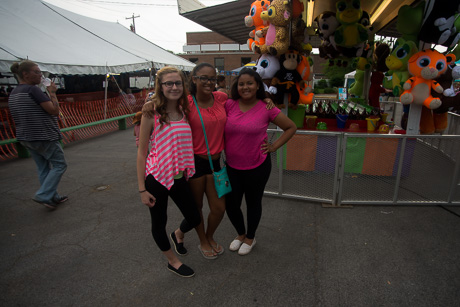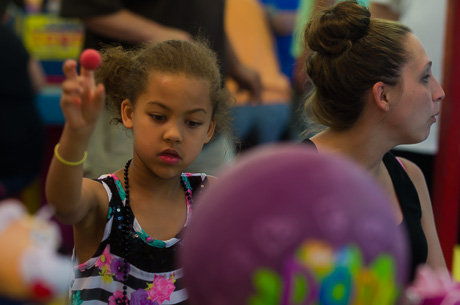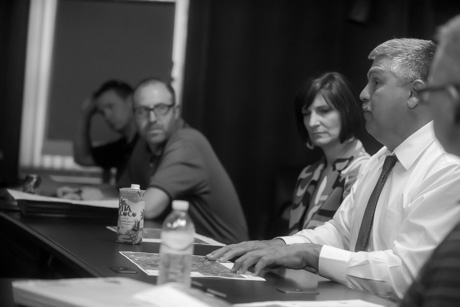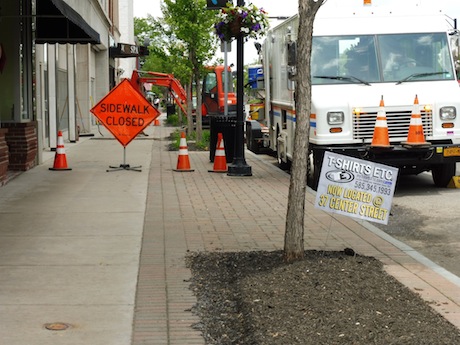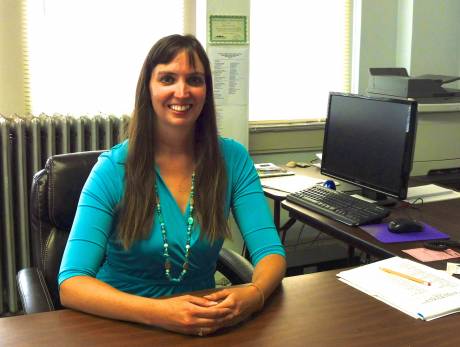The last text he sent, before hitting an Amish buggy with three children inside, was "I love you" to his wife. He's not even sure if he was looking at the road at the time of the accident. The next thing he knew, the windshield shattered and when he stopped, a person rolled off the roof of his van and onto the hood.
Debbie was struck by a teen who was texting while getting her mail from her roadside mailbox. She now has limited mobility, memory loss and other health issues. The accident left her entirely dependent on relatives. Debbie doesn't remember the accident at all. She went from being active to inactive in a just a second.
“I made the choice that texting was more important to me than those two men were to their families,” said a young man. “That accident was preventable. I just had to put my phone away and drive.”
These stories and others were shown to Alexander and Warsaw high school students Friday during the Save a Life, Alcohol Awareness tour program at Alexander High School. The presentation, given by tour manager Clay Martin, is to put a spotlight on what drivers do in their cars -- it matters, even if there are no passengers.
“There's no message that would be worth picking up that phone,” Martin said. “Remember, many people may not get a chance to see these videos, but if you make it a point to remember, the avalanche of waiting until it's safe to write that text will propel and maybe it will start a chain of safer driving.”
The Save A Life Tour is a comprehensive high-impact, safe-driving awareness program that informs, educates and demonstrates the potentially deadly consequences resulting from poor choices and decisions made by a driver. The program specifically places emphasis on distracted and impaired driving, driver experience, improper driver behavior, and seat belt usage. The Department of Defense, as well as the Connecticut and Rhode Island departments of transportation, also use this program.
“All good driving begins with making simple habits,” Martin said. “Most people pick up their cell phone at a stop light, but most accidents occur at an intersection. You have to be prepared and pay attention. You have to be aware of not only your actions but those who are around you as well.”
Just a few seconds of distraction can take you the distance of a football field when driving at 55 mph. According to Martin, a drunk driver has driven 327 times before something happens. In 2012, a total of 3,326 people died in distracted-driving-related accidents and more than 421,000 people sustained injuries.
Alcohol has an amazing way of blurring the consequences, Martin told the teens. “Alcohol gets silly names like 'liquid courage' and 'beer muscles', but what it really does is put a barrier between you and a rational choice.
“There is a list of people in your phone that you can call for a ride,” Martin said. “I bet if you start in the As, by the time you reach the Cs you could have someone willing to pick you up on Christmas Day during a snowstorm.”
Not only did the students view a presentation, two simulators were set up for them to try to experience what it was like when the driver is distracted behind the wheel or has been drinking.
“It was hard to do,” said Alexander Middle/High School Principal Shannon Whitcomb. “It got more difficult as I kept going.”
“I think it has an impact. I don't know that we can determine how much, but you can tell by the attentiveness of our students that they were learning from the presentation and hopefully help them with choices in their future,” said Alexander School Superintendent Kathleen Maerten. “It’s providing education in a realistic manner. The experiential part is certainly important. The stories shared on the video have an impact as well. I think his point is that, even if you're not the driver and you're the passenger, you can advise the driver. The responsibility is not only in the hands of the driver it's the passengers as well.”
Alexander High School senior Raven Quackenbush said “The scariest thing about it is something happening to my family. I’d rather it happen to me, than the ones I care about.”
“I have texted when I was driving and I swerved, but I don't do that anymore,” said Alexander senior Jessica Meyers. “I'm so aware of what I'm doing that it's not worth it. When you're driving with other people that are in your car, you're responsible for their lives. I appreciate it when parents trust me.”
Quackenbush said: “You have to ask yourself -- 'Is this more important than my life?' It's not too hard to say hey, can you check that for me. You can pull over for five seconds.”
The Alexander Central School Parent Teacher Association sponsored the program as a way to remind students to make good decisions.
“It’s especially important because our prom is next weekend,” said Alexander Students Against Destructive Decisions (SADD) student President Hunter Doran. “We know that there will be those who decide to drink.”
“We just want them to be safe,” said SADD Advisor Shawnie Woeller. “You're not always going to hit them all. I've been doing this for so long that it use to bother me, but I have to take the stand that if we can affect one kid’s life, it does make a difference.”
“It resonates with me every time I watch this,” Doran said. “I don't ever want to have to deal with it, but the possibility is that I may have to. I want to educate myself as much as possible.
I have no problem telling someone to stop. I see these people every day, I don't want them to end up in a hospital because of it (distracted/drunk driving).”
“I want to be an example,” Woeller said. “I want to remind kids that there is a way to have fun, but you have to know when to stop."
According to Whitcomb, the kids can make the connection between the selfishness of taking their phone out to text while driving. Any way getting the word out works, different presentations affect different kids.
“I don't think we give kids enough credit,” Whitcomb said. “We just need to give them the information and trust the will make good choices.”
“Other families matter, too,” said Warsaw High School Junior Ashley Scott. “I wouldn’t get in a vehicle with anyone drinking, I would take their keys away.”
“I think it’s cool that they gave the stories and then let the kids use the simulators,” said Warsaw ELA teacher Jen Smith. “They way they set this up was perfect. Even though our prom is over with, the summer is starting and you have grad parties. It’s a good way to end the year as a reminder.
“This should also be shown to adults. It would be a benefit. I don't think you can get enough of stuff like this,” Smith said. “I wonder if people even really think about it until it affects their community or family.”
According to SRO officer at Warsaw Central School Tim McGinnis, it’s a good barometer of what can happen if a driver decides to text or drink and drive. McGinnis agrees that it absolutely makes the kids see a reality of what can happen. While he said that it sometimes may take time for the information to really hit them and sink in, he’s hoping it is a deterrent to poor choices, which can have long-term effects on everyone.
“It helped me realize that it can impact more than just a driver,” said Warsaw junior Nate McGuire. “I felt sorry for them at first. It shows the impact of one very small moment and how it can impact the rest of their lives.”
“My favorite feedback I get is when the kids come back and tell me they had a conversation about this in another class,” Martin said. “That's what we want the kids to do, get talking about it. Those stories represent the people who are affected.”
“It’s not even tempting for me to drink if I’m going to drive,” Quackenbush said.
“I don’t care what people think if I don’t drink,” Meyers said.
Both girls said there is so much more to do with their time.
For more information about the program visit www.savealife.com

